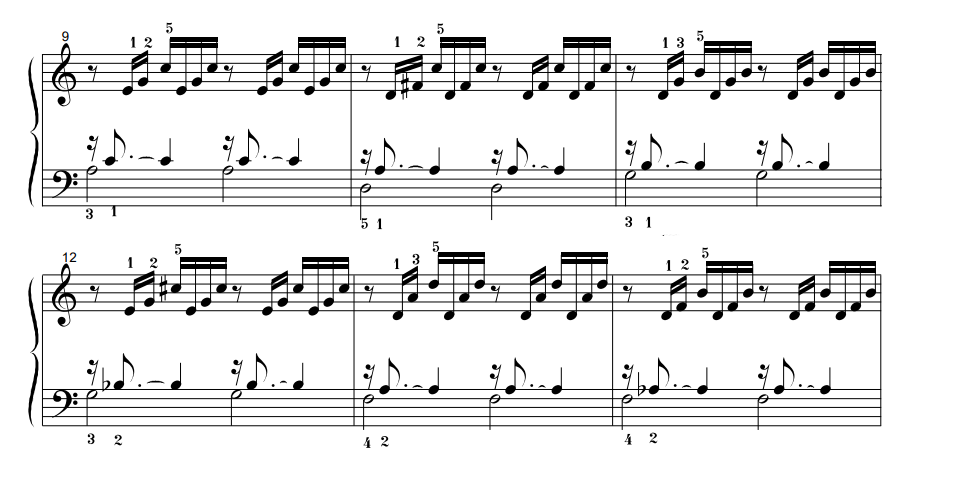I am a self taught keyboard player, and thus humbly request for guidance.
While trying to learn Preludio in C Major (also, Prelude) by J S Bach, I was trying to note down the chord each bar has been broken down into, for ease of reference and for learning new chords. Since I only know the basic chords, I was using this chord identifier to help me with seeing patterns and identifying the chord in each bar. I found that there's some dispute in the chord of bar 12. There are two chords which are made up using the same set of notes (G A# E C#) as in bar 12: Edim7 and Gdim7.
Upon further research, I discovered that the placement of the "E" note was making all the difference.
- When the E was placed before all other notes, it was being labelled as Edim7.
- When the E was being placed at the end of all other notes, it was being labelled as Gdim7.
My question is, what difference does it make? The sound produced by both these variants seems similar to my ear. Why does this difference arise? Are there other cases like this where two different chords constitute the same notes, and how do I identify which one it is?

